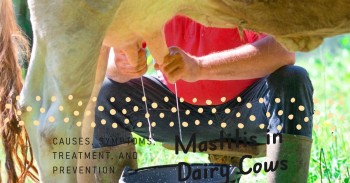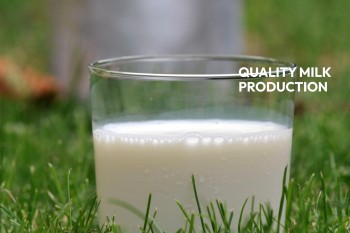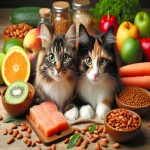🐄🥛 Udder Edema in Dairy Cattle: Signs, Symptoms, Diagnosis, Treatment and Prevention 🐮🐄
Udder edema, also known as udder swelling, can be a major issue for dairy cattle farmers. This condition leads to an abnormal accumulation of fluid in the udder tissue, causing swelling, discomfort, and problems with milking. In this comprehensive guide, we will discuss the signs, symptoms, causes, diagnosis, treatment, and prevention of udder edema in dairy cows and buffaloes.
🚨 Signs and Symptoms of Udder Edema
The main sign of udder edema is excessive swelling of the udder. The swelling is most noticeable on the lower portion and extends forward under the skin in front of the udder.
Other signs and symptoms include:
Tight, shiny skin on the udder due to fluid accumulation
Teats appear shortened and point outwards
Difficulty milking due to swelling
Discomfort and restlessness in the animal
Swelling may be more severe in heifers than older cows
Swelling starts before calving as lactation begins
Severe udder edema can lead to problems such as damage to udder ligaments, udder injuries, mastitis risk, and reduction in milk production. If you notice any signs of abnormal udder swelling in your herd, seek veterinary advice immediately.
🩺 Diagnosis of Udder Edema
A physical examination of the udder is usually sufficient for a veterinarian to diagnose udder edema. The vet will check for swelling, skin tightness, and milk let-down issues.
Your vet may also ask questions about the animal's history and management to help determine underlying causes of the condition. Blood tests are not usually required for diagnosis.
💡Causes and Risk Factors for Udder Edema
The exact causes of udder edema are not fully understood. However, several factors can increase risk or contribute to its development:
Breeding Status
Heifers are at higher risk than older cows
Usually occurs around first calving as lactation begins
Pregnant animals near calving are most susceptible
Genetics
Some cattle bloodlines are genetically prone to udder edema
Diet Issues
Feeding too much grain or rich concentrate pre-calving
Excessive sodium or potassium intake
Inadequate protein intake
Physiological Factors
Hormone fluctuations around calving
Pressure on veins and lymph from large fetus
Drop in blood proteins as colostrum production starts
Management Factors
Overfeeding legume hay to dry cows
Lack of exercise for heifers and dry cows
Heat stress or chill stress on udders
Oxidative Stress
Toxins and minerals promote excess free oxygen in udder tissue
By understanding the various factors that can contribute, you can make management changes to reduce udder edema risk in your herd. Consult your vet if it is occurring frequently.
💊 Treatment and Relief for Udder Edema
If you notice udder swelling in your cattle, contact your veterinarian right away. Several medical and home treatments may help relieve the condition.
Medications
Vets may prescribe:
Diuretics to reduce fluid buildup
Anti-inflammatories for swelling and pain
Antihistamines to reduce histamine release
Massage and Heat Therapy
Gently massage the udder upwards to improve fluid drainage
Apply warm compresses to increase circulation
Milking andExercise
Milk affected cows frequently to relieve pressure
Encourage moderate exercise to stimulate lymph flow
Supportive Care
Use udder supports if ligaments are stretched
Ensure clean, dry bedding to prevent mastitis
Herbal Remedies
Some herbal supplements may help reduce swelling, such as:
Dandelion, celery seed, juniper - natural diuretics
Anti-inflammatory herbs like turmeric
Vitamin B6 and B12 injections
Work closely with your vet to find the right treatment protocol for each affected animal. Relief should occur within a few days if treated promptly.
💪 Preventing Udder Edema in Dairy Herds
While some swelling is normal around calving, excessive udder edema should be prevented through proper herd management. Here are some top tips:
Offer balanced nutrition:
Avoid excess grain, sodium, potassium pre-calving
Ensure adequate protein, vitamins, minerals in diet
Limit legume hay to 50% of forage for dry cows
Encourage exercise:
Allow dry cows and heifers outdoor access
Provide space for walking and grazing
Careful transitioning:
Make diet changes gradually when transitioning to milking
Reduce stress:
Give supportive care pre and post calving
Ensure clean, dry pens
Avoid overcrowding
Selective breeding:
Avoid using bulls and heifers prone to udder edema
Record cases:
Keep notes on affected animals
Monitor for patterns and herd issues
With proper prevention measures, udder swelling can be minimized for healthier, more productive dairy cattle. Consult your veterinarian if edema persists or returns.
🐄 In Conclusion: Udder Health Starts From Within
Udder edema is a common condition in dairy herds that requires swift treatment and prevention measures. By understanding the causes, implementing management changes, and working with your vet, udder health can be greatly improved. Monitoring animals around calving, providing balanced nutrition, reducing stress, and encouraging exercise are all key to preventing fluid buildup and swelling issues. With proactive care, dairy cows and heifers can avoid udder problems and produce milk to their full potential.
References:
Mastitis and Udder Edema - Oregon State University
Udder Edema Complex in Buffaloes - Veterinary World Journal
Related Articles from Our Veterinary Blog:
Mastitis in Dairy Cows: Detection, Treatment and Prevention
Complete Guide to Milking Hygiene on Dairy Farms
Nutrition Tips for Healthy Dairy Cattle


















